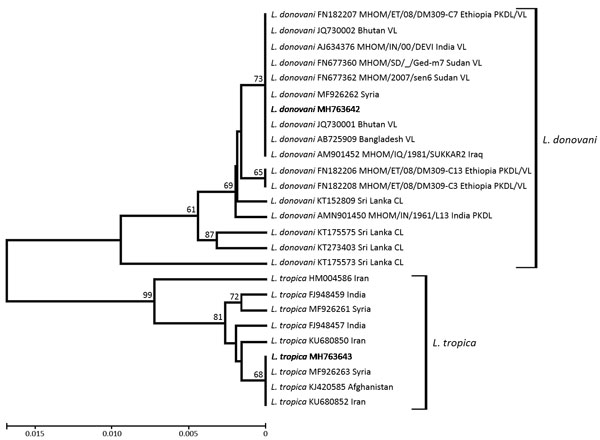Volume 25, Number 2—February 2019
Dispatch
Identification of Leishmania Species in Naturally Infected Sand Flies from Refugee Camps, Greece
Figure 2

Figure 2. Dendrogram depicting internal transcribed spacer 1 genetic relationships of the 2 Leishmania haplotypes (bold) found in study of Leishmania spp. in naturally infected sand flies in refugee camps, Greece, compared with conspecific Leishmania haplotypes obtained from GenBank. CIs >60% are indicated next to the branches. Each taxon is identified by species name, GenBank accession number, World Health Organization code if available, country, and type of disease caused, if known. Scale bar indicates nucleotide substitutions per site. CL, cutaneous leishmaniasis; VL, visceral leishmaniasis.
Page created: January 18, 2019
Page updated: January 18, 2019
Page reviewed: January 18, 2019
The conclusions, findings, and opinions expressed by authors contributing to this journal do not necessarily reflect the official position of the U.S. Department of Health and Human Services, the Public Health Service, the Centers for Disease Control and Prevention, or the authors' affiliated institutions. Use of trade names is for identification only and does not imply endorsement by any of the groups named above.